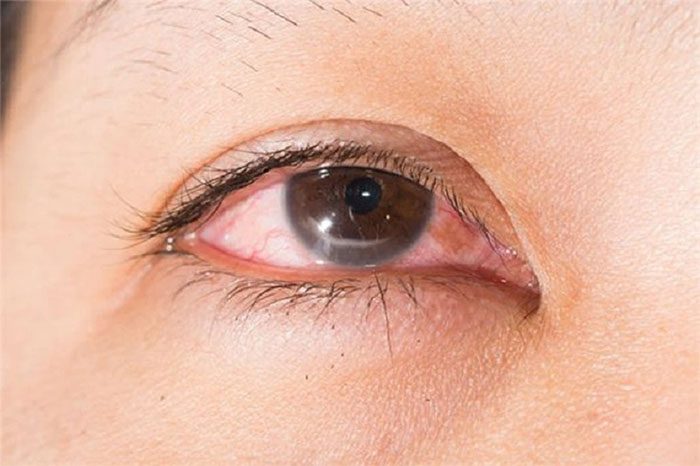Sinusitis and infections of the ear and eyes are closely related. Many cases of conjunctivitis and blepharitis recur repeatedly until the sinusitis is effectively treated.
Sinusitis occurs when the mucous membrane lining the sinuses becomes inflamed and blocked, creating conditions for bacteria to easily invade and form pus. As pus accumulates in the sinuses, pressure builds in the head, around the eyes, and on various related nerves.
According to Associate Professor Dr. Pham Thi Bich Dao, a senior lecturer in the Department of Ear, Nose, and Throat at Hanoi Medical University, while not life-threatening, the symptoms and complications of sinusitis significantly affect the health and daily activities of those affected. Eighty-five percent of cases of complications from this condition involve ocular complications from sinusitis. If not properly treated, a patient’s vision may be threatened in the long term.

85% of sinusitis complications can affect the eyes. (Illustrative image).
Why Sinusitis Causes Ocular Complications
Ten percent of ocular complications from sinusitis can lead to permanent blindness, while 65% of cases can affect vision temporarily or permanently. These alarming statistics have made many patients more vigilant.
Dr. Doan Viet Cuong from the Department of Ear, Nose, and Throat at Viet Phap Hospital (Hanoi) explains that the reason for the spread of infection from the sinuses to the eye area and optic nerve is due to the close proximity of the nasal sinus and eye structures. The anatomy of the nasal sinus and eye area includes: the eye socket is surrounded by several facial sinuses. The lower margin of the eye socket is formed by the upper wall of the maxillary sinus. The roof of the eye socket is located at the base of the frontal sinus. The nose is separated from the eye socket by a very thin bony wall. The lateral aspect of the sinuses and the area around the eyes are adjacent to each other.
Due to these unique structural characteristics, patients with sinusitis who do not receive effective and thorough treatment are at high risk for ocular complications such as periorbital cellulitis, optic neuritis, lacrimal sac abscess, and eyelid abscess. Among these, eyelid abscess is particularly dangerous. When the frontal or ethmoidal sinuses are infected, it can lead to eyelid abscess. In this case, the patient’s eyelid may become swollen, hot, red, painful, and show signs of conjunctival injection. After 4-5 days, the abscess may rupture, causing severe pain and significantly affecting vision, potentially leading to blindness.

Ocular complications from sinusitis, if not treated promptly, can lead to blindness. (Illustrative image).
According to doctors, ocular complications from sinusitis present various symptoms, depending on whether the affected area is around the eyes or the optic nerve. The most common symptoms include itching in the eyes, difficulty moving the eyes, and pain when shifting focus. Eyelids may become swollen and red, and the eyes may discharge cloudy fluid that is yellow or green. Sudden vision loss and difficulty seeing due to blurred vision may occur. Patients may experience fatigue, fever, headaches, and loss of appetite.
In addition to treating sinusitis, patients need to actively address any ocular complications based on diagnostic results regarding their condition, stages, and other complications. Most of the consequences of sinusitis lead to eye infections or related complications, so patients need to treat eye infections first.


















































